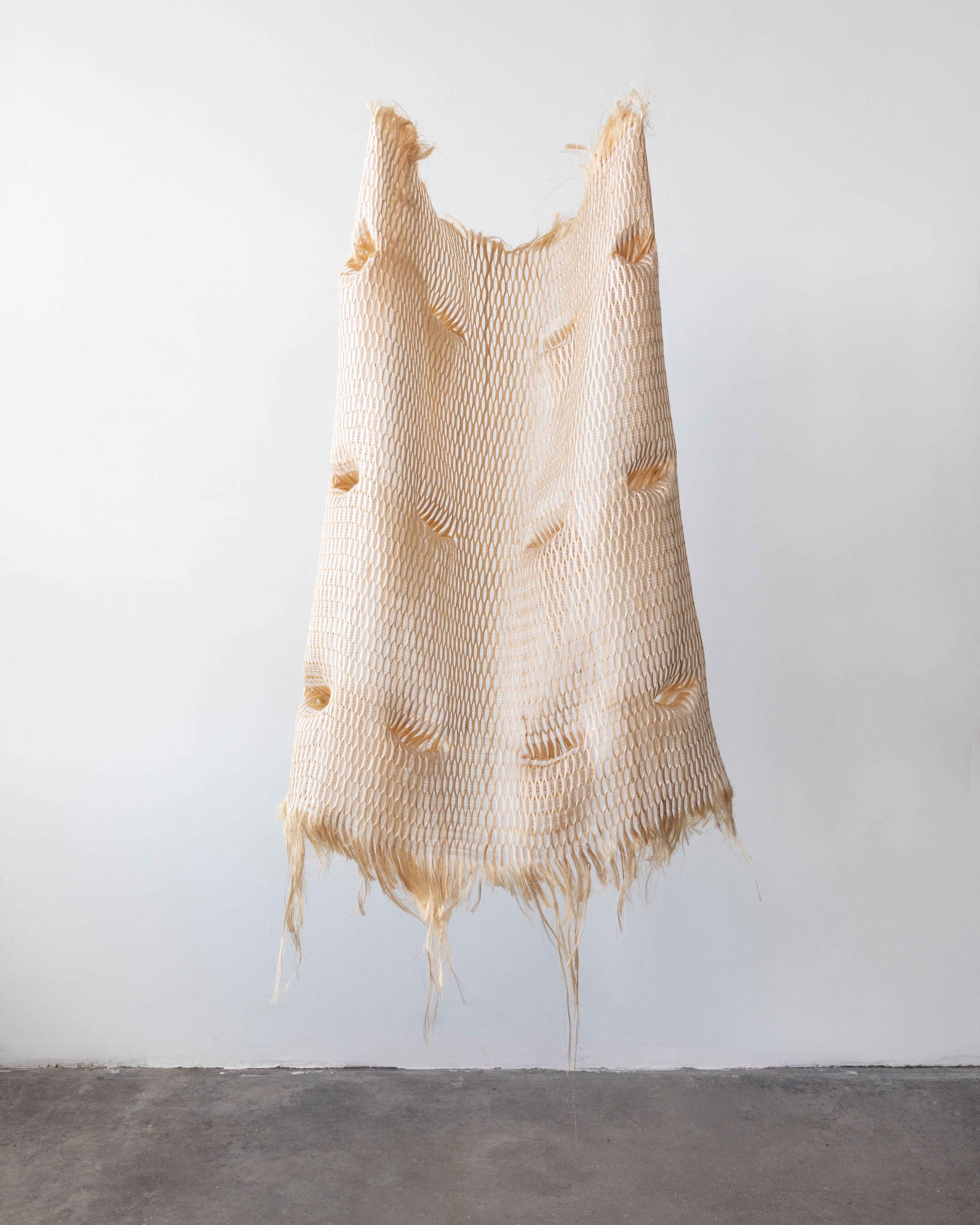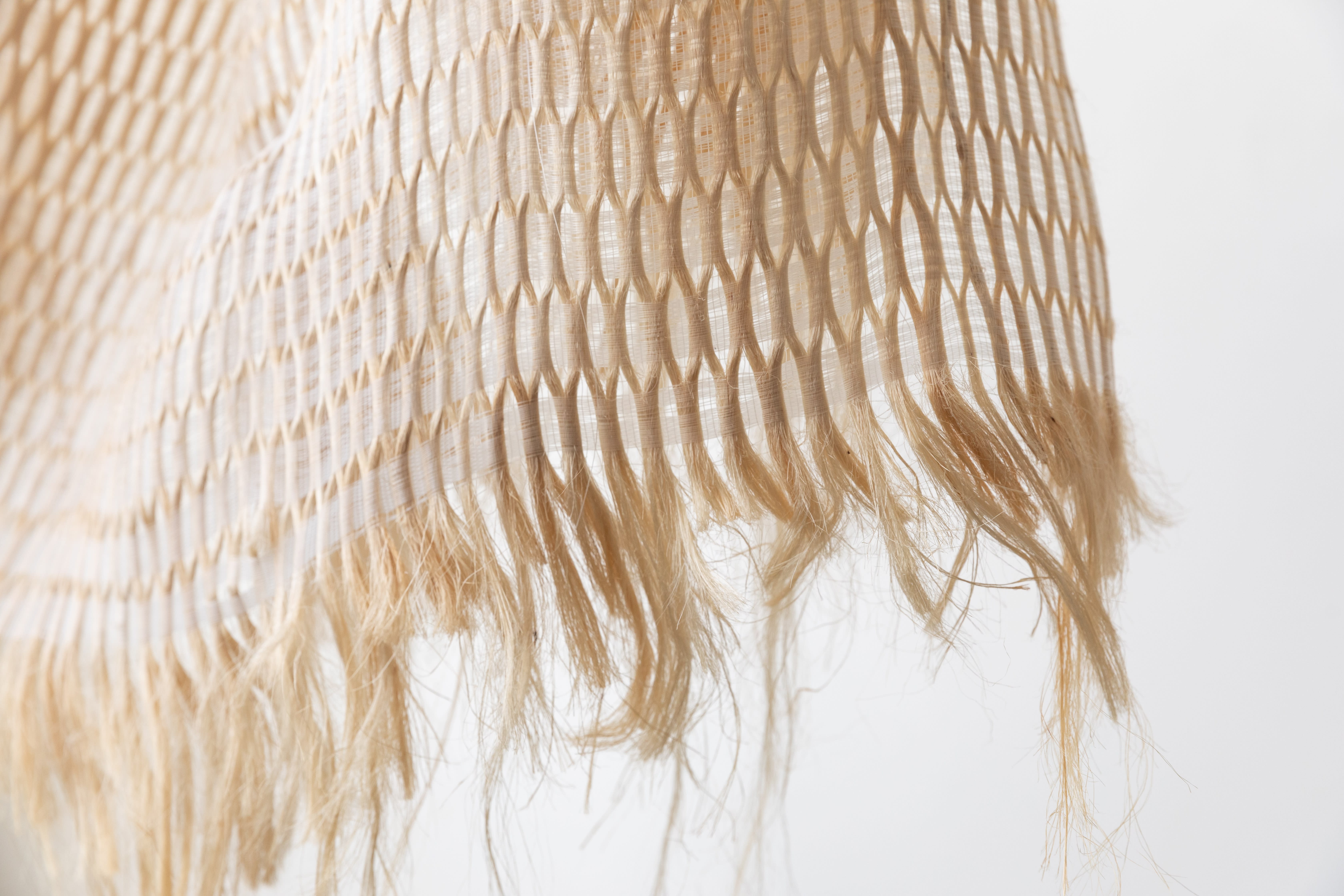Los Angeles-based weaver and artist, Molly Haynes, explores the interplay of structure and materiality, reflecting the dynamic between humanity and the environment in her tactile woven sculptures. Haynes constructs undulating shapes using unconventional materials like raw plant fiber and salvaged marine ropes, blurring the boundaries between the natural and the human-made.
After earning her B.F.A. in Textiles at the Rhode Island School of Design, Haynes went on to design for the interior textiles industry, where she gained a deep understanding of fibers and the construction of cloth. After several years, she decided to immerse herself in her practice, devoting herself entirely to crafting handmade pieces that transcend the boundaries of utility.
In 2023, Haynes participated in Volume, a group show at ARDEN + WHITE GALLERY, which considered how art occupies the physical spaces around them and the perceived depth of the three-dimensional and two-dimensional qualities that they express. Haynes' utilization of unconventional materials, organic alongside the humanmade, creates immersive environments devoid of clear beginnings or endings, enhancing the interplay of dimensions and perception.
We had the opportunity to conduct a brief Q&A with Molly, delving into her artistic practice and offering insights into what we can anticipate next.

"I find the duality between natural and synthetic fibers creates a vibrating tension which enlivens the surface of the weaving." -haynes
A+W: We truly appreciate the harmony between manmade and natural materials evident in your artwork. Could you share with us the inspiration behind integrating these two elements?
HAYNES: It’s hard to pinpoint one single inspiration— but I would have to say that growing up in New England and visiting the commercial fishing docks and marshlands sensitized me to a certain tactile sensibility from a young age.
I find the duality between natural and synthetic fibers creates a vibrating tension which enlivens the surface of the weaving. Each material stands out in contrast to its neighbor. The monofilament fishing line provides an invisible hold that brings clarity and strength to the vulnerable plant fibers, allowing them to appear suspended in a synthetic skin. This hybrid combination also speaks to our complicated relationship with manufactured materials and their entanglement with our daily lives.

A+W: There is an organic, yet architectural element within your work, unlike traditional weaving techniques. Is there a connection between this and the materials?
HAYNES: There is a “soft order” to my work which stems from the union of structure and material. Most of my works use a weave structure called deflected wefts: composed of two layers weaving simultaneously, one interlaces tightly in the background, and the other forms channels which distort a thicker weft (the natural fiber) on the face.
Instead of rectangles and sharp corners found in traditional plaids and coverlets, ovoid patterns emerge. I’m interested in how this weave structure mimics patterns found both in nature (snakeskin, honeycomb) and industrial settings (nets, architecture). The duality and tension between these two associations are what keeps me excited about the work.



For more information on available works by the artist, contact gallery@ardenandwhitegallery.com

